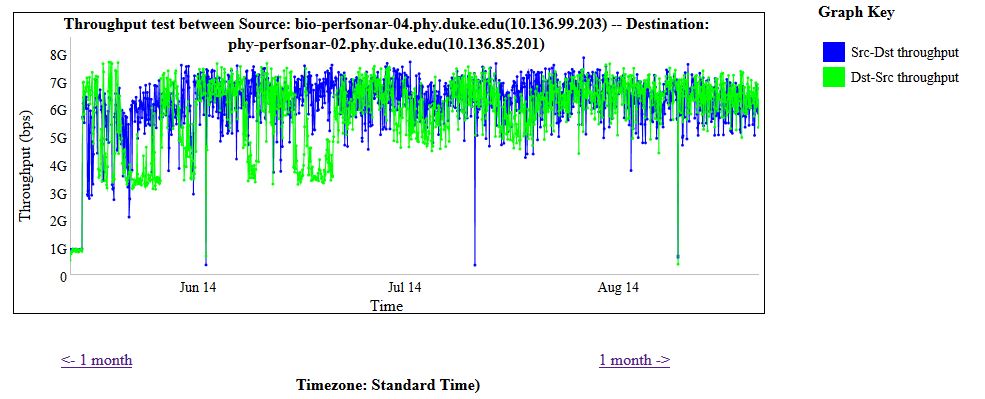The perfSONAR nodes deployed across campus provide two primary sets of measurements – Latency and Bandwidth. In our testing since the beginning of the year, we have gotten greater insights into the campus network from the bandwidth measurements than the latency measurements. The latency measurements for wide area connections to Singapore (both the I2 and Duke services) and along the path to Singapore have been useful. The latency measurements on campus often show “negative latency” due to the precision of the clock synchronization between the two servers.
Originally we had deployed pairs of perfSONAR nodes inside of departmental networks. We plan to re-deploy the boxes that are solely used for latency measurements to other places on the Duke network. We also will reserve one of the Dell servers for ad hoc deployments to campus locations to help debug performance issues.
As noted earlier, we have seen value for latency measurements done outside of the Duke campus and will be keeping servers for latency measurements in Telcom and Fitz East. We are also looking to confirm that we can use both NICs in the Dell servers to be able to simultaneously measure bandwidth and latency on the same box. Note that this does require two 10G network connections in target data centers/buildings closets which should not be connected to over subscribed 10G network ports.
Ultimately we will end up with:
- Loaner/Test Server
- Bandwidth and Latency Measurement – Outside of all networks (edge/perimeter)
- Bandwidth and Latency Measurement – Campus Data Center
- Bandwidth and Latency Measurement – Inside network, outside of MPLS core
- Bandwidth and Latency Measurement – AL2S Network
- Bandwidth in Physics DC on Physics VRF
- Bandwidth in BioSci DC on Physics VRF
- Bandwidth in BioSci DC on Biology VRF
- Bandwidth in Library DC on Library VRF
- Bandwidth in DSCR on DSCR VRF




